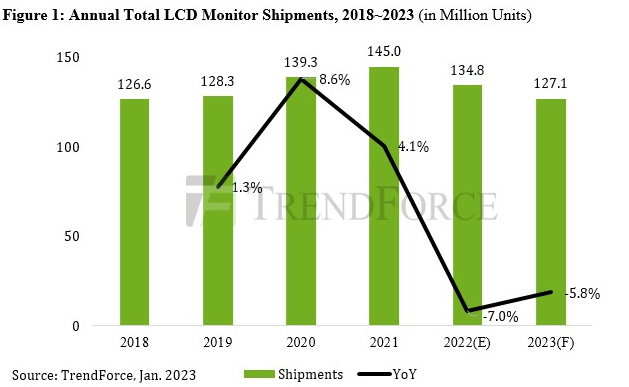Ameya360:Insights on Innolux-Vedanta LCD Tech Transfer
On February 14, 2023, Innolux made a public disclosure that it has reached an agreement to transfer TFT LCD panel and module technology to India’s Vedanta. The disclosure includes few details, but assumptions include:
• The factory will be India’s first integrated flat panel display factory including both TFT, color filter, and cell frontplane processes as well as module assembly.
• Although unconfirmed at this point, Vedanta had previously also planned to build its own by-plant glass melting and finishing facility factory with support from its glass-producing subsidiary AvanStrate.
• The fab will be similar to Innolux’s Fab 8B and is likely to adopt Gen 8.6 or 2250 x 2600 mm substrates. A capacity of 60,000 substrates per month is currently assumed.
• Vedanta engineers are already involved in on-site training in Taiwan.
• Innolux presumably will receive a one-time technical transfer payment and then collect ongoing royalty payments per display when mass production begins.
• Vedanta has ambitious plans. Assuming success with this first factory, it has long-term hopes of expanding production to other regions in India and growing into the role of a leading, global FPD producer.

The technology transfer is a key milestone for Vedanta, which will facilitate not only a rapid transfer of critical manufacturing technology, but also government approval, financing, supplier support, and improved outcomes for what will undoubtedly be a very big challenge to launch a domestic FPD industry in India.
The timeline is likely to change as the plan develops, but Omdia’s current expectations are shown in the figure below.
Bharuch, in the state of Gujarat, has been proposed as a likely factory location. The ancient city is highly industrialized and is home to many chemical and other manufacturing facilities. Bharuch is a port city with a large liquid cargo terminal that makes importing equipment and materials and exporting finished products convenient.
Manufacturing FPDs in India is appealing for the large available market, which is expected to grow rapidly on the expansion of the middle class and a lower FPD saturation rate than developed regions. Also, it is not just India; surrounding Southern Asian countries are potential markets for made-in-India consumer electronics.
Since 2014, the government has promoted a “Make in India” policy that targets increasing growth in the manufacturing sector, creating more manufacturing jobs, and growing the manufacturing sector’s contribution to GDP. In parallel, many state governments also launched related local programs. Governmental assistance for the project, including significant central and local government incentives and financial support, is both driving the investment and important in helping to coordinate the complicated effort.
India is promoting itself as a manufacturing alternative to China and has particular appeal in an era where geopolitical concerns and trade frictions are strongly encouraging sourcing diversification for multinational IT firms.
For Innolux the agreement is positive news in a very difficult market environment. The company, like the rest of the display industry, continues to struggle to work through severe over-capacity, low prices, and financial losses. The initial technical transfer should include a significant cash payment. This can be used to mitigate current losses and give Innolux some flexibility to consolidate its business while shifting its focus to higher value-added products. Vedanta is not likely to become a direct competitor, rather its long-term success is upside potential in creating a future royalty-based revenue stream for Innolux.
The technology transfer agreement is a major milestone for Vedanta, but it’s far from the final step. Planning the factory, getting government approval, financing, supplier support, building and ramping up the facilities, as well as many other stages along the way need to be successfully worked through before any panels are actually produced in India. But now, with Innolux’s backing, Vedanta is in the best position it has ever been, in realizing its very long-held dream of becoming India’s first FPD producer and leading the development of a domestic display industry.
在线留言询价
- 一周热料
- 紧缺物料秒杀
| 型号 | 品牌 | 询价 |
|---|---|---|
| RB751G-40T2R | ROHM Semiconductor | |
| BD71847AMWV-E2 | ROHM Semiconductor | |
| CDZVT2R20B | ROHM Semiconductor | |
| MC33074DR2G | onsemi | |
| TL431ACLPR | Texas Instruments |
| 型号 | 品牌 | 抢购 |
|---|---|---|
| BP3621 | ROHM Semiconductor | |
| IPZ40N04S5L4R8ATMA1 | Infineon Technologies | |
| STM32F429IGT6 | STMicroelectronics | |
| TPS63050YFFR | Texas Instruments | |
| BU33JA2MNVX-CTL | ROHM Semiconductor | |
| ESR03EZPJ151 | ROHM Semiconductor |
- 周排行榜
- 月排行榜
AMEYA360公众号二维码
识别二维码,即可关注


请输入下方图片中的验证码:























